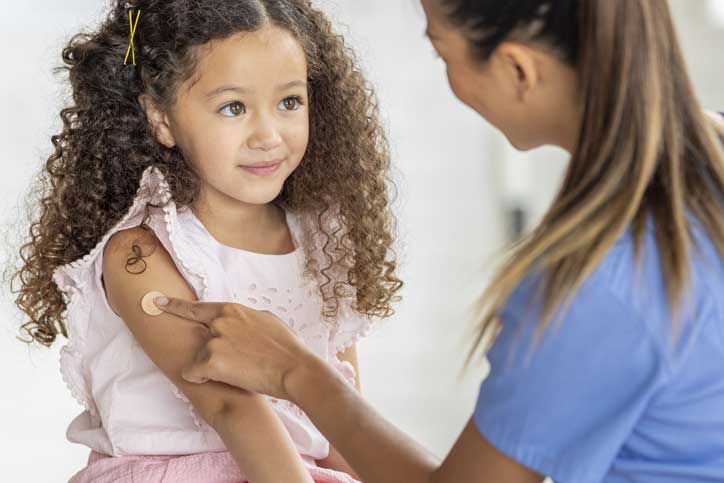
Guidance on the Use of Rapid Antigen Tests
When is it Recommended to Use a Rapid Antigen Test?
Rapid antigen tests are recommended for people with symptoms. If you are symptomatic:
- A positive rapid antigen test is highly indicative that you have COVID-19, and you are required to self-isolate, in accordance with guidance. A confirmatory PCR test or any follow-up testing is not necessary after a positive rapid antigen test. The individual should also reach non-household contacts by providing them with the link to Ontario.ca/exposed.
- A negative rapid antigen test does not rule out COVID-19. Repeat the test 24 to 48 hours later. If two consecutive rapid antigen tests, separated by 24 to 48 hours, are both negative, it is less likely that you are infected with COVID-19, and you are advised to self-isolate until symptoms are improving for at least 24 hours (or 48 hours if gastrointestinal symptoms) and that you have no fever.
Rapid antigen tests are not recommended for one-off testing (e.g., before a social gathering) by people who are asymptomatic and without known exposure to someone with COVID-19 as a negative result could be a false negative.
Combined Oral-Nasal Samples
Rapid antigen tests are less sensitive for some COVID-19 variants, especially in the first 1 to 2 days after infection. However, the Ontario COVID-19 Science Advisory Table states that rapid antigen tests can more reliably detect infectious cases of COVID-19 variants in combined oral-nasal samples.
Start by reading the instructions that come with your kit. If no instructions were provided, see the links below to learn how to use each variety. Follow these additional step by step instructions that include swabbing both cheeks, followed by the back of the tongue or throat, and then both nostrils.
Instructions on how to use each variety of rapid antigen test being distributed by the province:
Frequently Asked Questions about Rapid Antigen Testing (RAT) and PCR tests
I’m symptomatic and I’ve done a RAT that is positive
I’m symptomatic and I’ve done a RAT that is negative
I’m asymptomatic and I’ve done a RAT that is positive
I’m asymptomatic and I’ve done a RAT that is negative
I’m symptomatic but I tested negative on a PCR. Do I (and my contacts) still need to isolate?
I’m symptomatic and I’ve done a RAT that is positive
Antiviral treatments are available for individuals with symptoms and a positive test result (PCR or rapid antigen test) who are at higher risk of severe COVID-19. Because these treatments must be taken within the first five to seven days of symptom onset, individuals at higher risk of severe COVID-19 who have symptoms and a positive test should seek further assessment immediately. Take this screener to determine if you are at higher risk of severe COVID-19 and may benefit from these treatments. Find out more about antiviral treatment options or talk to your health care provider.
Additional information:
- You are no longer required or encouraged to get a confirmatory PCR or rapid molecular test. It is not necessary to report positive rapid antigen test results to the EOHU.
- If you test positive from a rapid antigen test or are presumed positive based on your symptoms, see here for isolation instructions.
- Household contacts of individuals who test positive or are presumed positive based on their symptoms may need to follow additional precautions as shown here.
- You should also reach your non-household contacts by providing them with the link to Ontario.ca/exposed.
I’m symptomatic and I’ve done a RAT that is negative
If you are symptomatic and are at higher risk of severe COVID-19, you may be eligible to receive COVID-19 antiviral treatments. RATs may be negative in the early stage of infection, so those who are at higher risk of severe COVID-19 should seek further testing and assessment immediately if their RAT is negative.
Additional information:
- A negative rapid antigen test does not rule out COVID-19. Repeat the test 24-48 hours later. If you complete 2 RATs, separated by 24 to 48 hours, and both are negative, you may end self-isolation once your symptoms are improving for at least 24 hours (or 48 hours if gastrointestinal) and that you have no fever. Any household members who may have needed to isolate can discontinue self-isolation, as long as they are asymptomatic.
- If you are not able to complete 2 RATs, you are presumed positive based on your symptoms and you must follow the direction here. You are no longer required or encouraged to get a confirmatory PCR or rapid molecular test.
- Household contacts of individuals who test positive or are presumed positive based on their symptoms may need to follow additional precautions as shown here.
- You should also reach your non-household contacts by providing them with the link to Ontario.ca/exposed.
I’m asymptomatic and I’ve done a RAT that is positive
- You are no longer required or encouraged to get a confirmatory PCR or rapid molecular test. It is not necessary to report positive rapid antigen test results to the EOHU.
- If you test positive from a rapid antigen test or are presumed positive based on your symptoms, see here for isolation instructions.
- Household contacts of individuals who test positive or are presumed positive based on their symptoms may need to follow additional precautions as shown here.
- You should also reach your non-household contacts by providing them with the link to Ontario.ca/exposed.
I’m asymptomatic and I’ve done a RAT that is negative
- You do not need to self-isolate. You may need to follow additional precautions because of a close contact as shown here.
I’m symptomatic but I tested negative on a PCR. Do I (and my contacts) still need to isolate?
- People who have symptoms that are eligible for testing and test negative on a PCR test may discontinue isolation once symptoms have been improving for 24 hours (or 48 hours for gastrointestinal) and that you have no fever.
Certain sections of this page were adapted from Ottawa Public Health.

